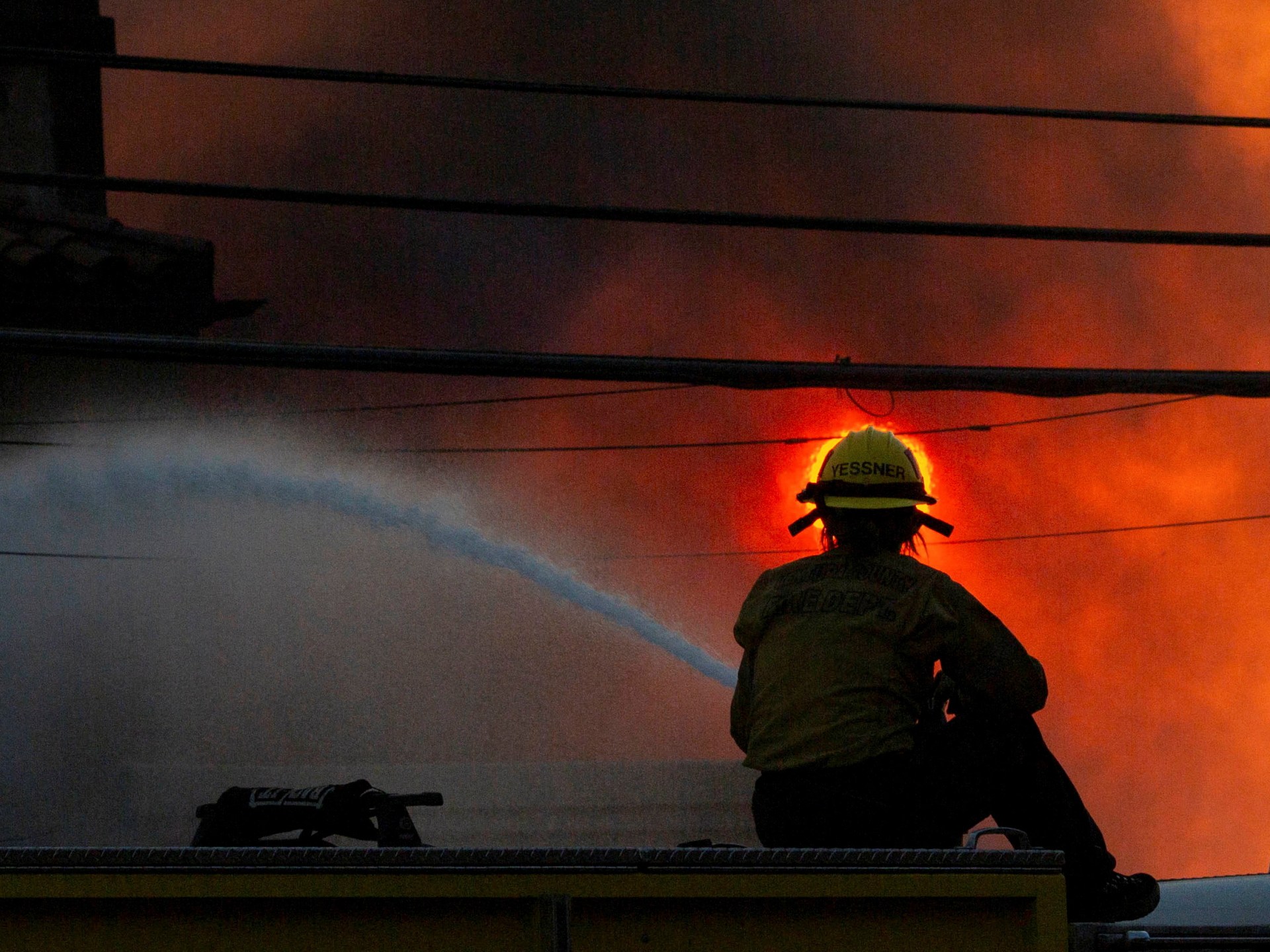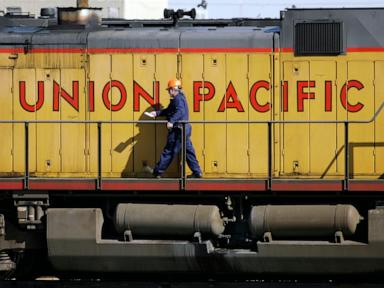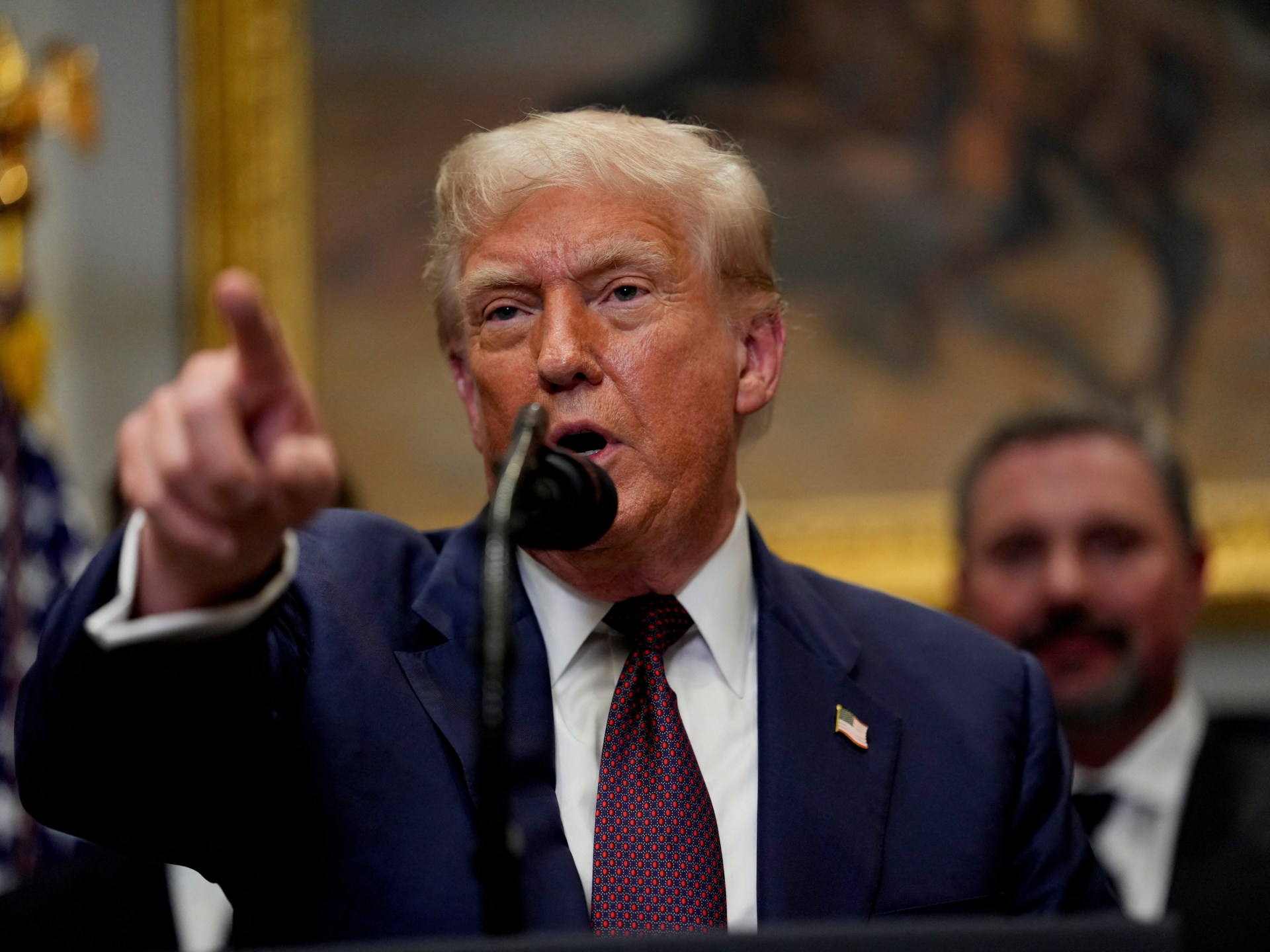
President-elect Donald Trump and some social media users and pundits blamed Los Angeles’ deadly fires on California Governor Gavin Newsom, saying the Democrat’s environmental policies enabled the blazes’ danger and wreckage.
As of January 12, authorities counted at least 16 people dead, more than 14,000 hectares (35,000 acres) burned and thousands of structures damaged or destroyed.
Some social media users reposted Trump’s 2018 and 2019 criticism of California’s forest management policies, including false statements the then-president posted as firefighters battled previous wildfires.
It is not uncommon for Trump to make false claims about his political opponents during natural disasters. In 2018, he falsely said “Democrats” had inflated Hurricane Maria’s death toll in Puerto Rico. In October 2024, he fabricated a claim that North Carolina’s Democratic governor had blocked federal aid from flowing into the state after Hurricane Helene.
As Los Angeles wildfire victims reeled from the destruction, we fact-checked these viral claims to see how, or if, California water policy and forest management factored this disaster.
Trump misleads about California water policy
As Los Angeles firefighters raced to contain blazes in the Pacific Palisades neighbourhood on January 7 and January 8, the area’s hydrant water pressure ran low, and some hydrants stopped producing water.
Trump, in a January 8 Truth Social post, blamed Newsom’s management for the water issues and said Newsom had refused to allow “beautiful, clean, fresh water to flow into California”.
“Governor Gavin [Newsom] refused to sign the water restoration declaration put before him that would have allowed millions of gallons of water, from excess rain and snow melt from the North, to flow daily into many parts of California, including the areas that are currently burning in a virtually apocalyptic way,” Trump said. “He wanted to protect an essentially worthless fish called a smelt, by giving it less water (it didn’t work!), but didn’t care about the people of California. Now the ultimate price is being paid.”
Trump’s posts seemed to blame the water constraints on statewide water management plans that capture rain and snow as it flows from Northern California. But experts said those plans would not have affected the fire response.
Southern California has plenty of water stored, said Mark Gold, the water scarcity solutions director at the Natural Resources Defense Council and a Southern California Metropolitan Water District board member.
The local water shortages happened because the city’s infrastructure wasn’t designed to respond to a fire as large as the one that broke out in the Palisades and elsewhere, experts said.
“It doesn’t matter what’s going on at the Bay-Delta or the Colorado (River) or Eastern Sierra right now,” Gold said. “We have all this water in storage right now. The problem is, when you look at something like firefighting, it’s a more localised issue on where your water is. Do you have adequate local storage?”
Trump’s reference to a “water restoration declaration” that Newsom refused to sign is puzzling, as such a document does not appear to exist. Newsom’s press team said on social media, “There is no such document as the water restoration declaration – that is pure fiction.”
Trump’s transition team did not immediately respond to an email asking for clarification. After publication, a Trump spokesperson emailed PolitiFact referencing a plan from Trump’s first term that would have directed more water from the federal Central Valley Project to farmers in the San Joaquin Valley.
Newsom and then-California Attorney General Xavier Becerra sued the Trump administration over the plan, which they said violated protections for endangered species, including Chinook salmon and Delta smelt – a slender, 2- to 3-inch fish that is considered endangered under California’s Endangered Species Act.
But here’s the kink in Trump’s logic: The Central Valley Project provides no water to Los Angeles. The regional water district receives some water from the State Water Project, which also collects water from the Delta-Bay area and shares some reservoirs and infrastructure with the Central Valley Project. But most of the extra water from Trump’s plan would have been sent to the San Joaquin Valley, and it’s wrong to connect water management further north to the firefighting challenges in Los Angeles.
The local water system failed because the city’s infrastructure was built to respond to routine structure fires, not huge wildfires across multiple neighbourhoods, experts said.
Ann Jeffers, a University of Michigan civil and environmental engineering professor who studies fire engineering, said she doesn’t know of any industry standard for designing city water supplies to fight the kind of fire that erupted in the Palisades.
Dryness and high winds meant that “these fire events would be likely to exceed a given design basis, if one even existed,” Jeffers said.
Chris Field, a Stanford University professor and climate scientist, said climate change worsens these conditions.
Three main water tanks near the Palisades, each holding about 1 million gallons (3.8 million litres), were filled in preparation for a fire because of dangerous weather. The tanks were all depleted by 3am on January 8, Los Angeles Department of Water and Power CEO and Chief Engineer Janisse Quinones said during a January 8 news conference. Although water continued to flow to the affected areas, demand for water rose faster than the system could deliver it.
“There’s water in the trunk line, it just cannot get up the hill, because we cannot fill the tanks fast enough,” Quinones said. “And we cannot lower the amount of water that we provide to the fire department in order to supply the tanks, because we’re balancing firefighting with water.”
A reservoir near the Pacific Palisades that is part of the city’s water supply had been closed for repairs when the fires broke out, which may have slowed the water pressure issues had it been operable, the Los Angeles Times reported on January 10.
Other social media users claimed slow construction of California’s reservoir had led to the hydrants running dry. But local infrastructure failures, not regional water storage, caused the hydrant problems, so it’s wrong to blame them on these projects’ construction timeline.
“In 2014, Californians overwhelmingly voted to spend billions on water storage and reservoirs,” the conservative account Libs of TikTok posted on January 8. “Gavin Newsom still hasn’t built it. Now no water is coming out of the fire hydrants.”
California voters approved a 2014 ballot measure to spend $2.7bn on water storage projects – and, to date, none have been completed. Only one of those projects is a new reservoir, based in the Sacramento Valley about 724km (450 miles) from Los Angeles. It’s set to begin operating in 2033.
A closer project, the Chino Basin Program, will improve storage capacity in a system about 100km (60 miles) west of Los Angeles.
Trump blamed California’s forest management for deadly wildfires in 2018 and 2019.
In a 2019 X post, Trump said Newsom must “clean” forest floors. In another 2019 post, Trump wrote that “billions of dollars are sent to the State of California for Forest fires that, with proper Forest Management, would never happen,” and threatened to withhold Federal Emergency Management Agency (FEMA) money.
Social media users who re-shared the claim in the context of the Los Angeles disaster used a 2018 video of Trump with then Governor-elect Newsom at the scene of a destroyed mobile home park in Northern California. In the video, Trump spoke of the need to rake and clean forest floors to prevent wildfires.
“Trump warned him about this years ago,” Fox News host Jesse Watters said in a January 8 segment about the Los Angeles fires.
“Is Trump ever wrong?” one social media user asked.
In a September 2020 appearance with Trump after another California wildfire, Newsom said the state in the past had “not done justice in our forest management” and thanked Trump for supporting and funding a new “first-type commitment over the next 20 years, to double our vegetation management and forest management”.
Newsom also noted that the federal government owns 57 percent of California’s forest land versus 3 percent owned by the state, and that climate change plays a role in wildfires. Forest researchers confirm the forest land ownership statistics.
A January 8 post on Newsom’s website said California has “dramatically ramped up state work to increase wildland and forest resilience” treating more than 283,000 hectares (700,000 acres) of land for wildfire resilience in 2023. That’s up from about 231,000 hectares (572,000 acres) in 2021, according to a state dashboard tracking fire prevention work.
Prescribed fires (a controlled burn used to control wildfires) more than doubled from 2021 to 2023, the governor’s post said. Newsom’s press office said the state invests $200m annually on healthy forest and fire prevention programmes, and that his budget commits $4bn more in prior and future investments in wildfire resilience over the next several years.
Stanford University’s Field said factors controlling California’s fire risk and spread vary from place to place.
Fuel management in the Sierra mountain range forest is important, but less so near Southern California’s coast, Field said. Property owners and fire professionals can assist with fuel management, mostly by clearing flammable materials and vegetation around homes to create a buffer zone. In general, homeowners and homeowner associations would be responsible for that, he said.
Field said the wildland that has burned in Los Angeles covers areas that have many different owners. The federally owned Angeles National Forest neighbours Altadena, where the Eaton wildfire is burning. The Pacific Palisades blaze includes state and national parkland.
“California is fortunate to have a wide range of spectacular natural landscapes, but the state is struggling with how to manage those landscapes to manage fire risk,” Field said, adding that all government parties have started “ambitious” fire risk reduction programmes in recent years.
Field said it’s important for property owners to create buffer zones against wildfires, but added he doesn’t see evidence “that fuel management (or the lack of fuel management) played a role in the LA fires”.
Robert York, co-director of Berkeley Forests and a Rausser College of Natural Resources professor, said wildfires behave differently depending on whether they start in forests or in brush vegetation.
The Pacific Palisades fire, the largest of the state’s current wildfires, for example, began as a brushfire and spread through the area’s dense chaparral, a shrubland plant community common to the state. Chaparral is more easily overwhelmed by strong winds, limiting pre-fire management’s effectiveness, whereas forest-centred efforts to reduce tree density and underbrush are “well-known to reduce fire intensity”, York said.
State and private landowners have worked to improve forest management, he said, but more needs to be done.
PolitiFact Senior correspondent Amy Sherman contributed to this report.







